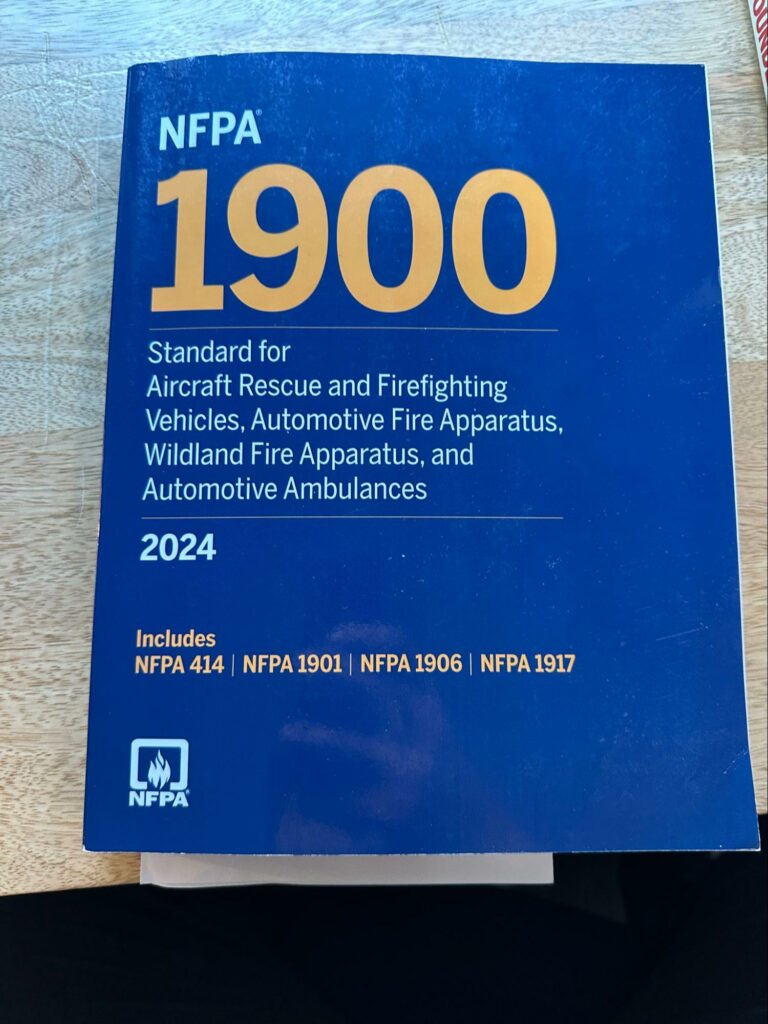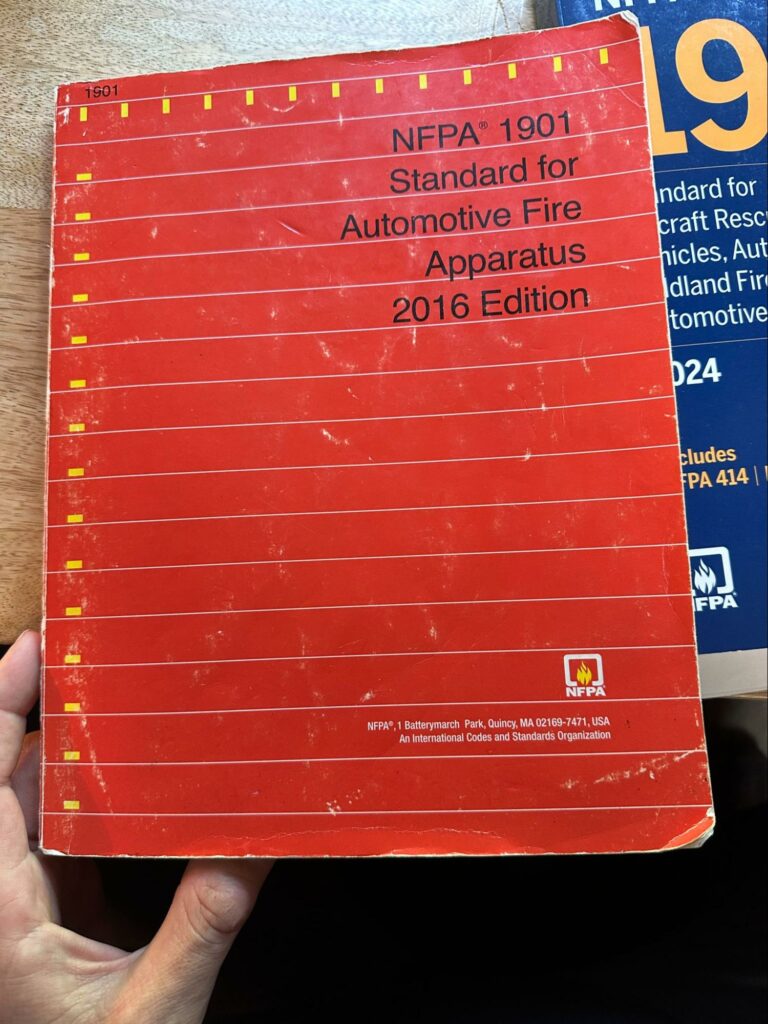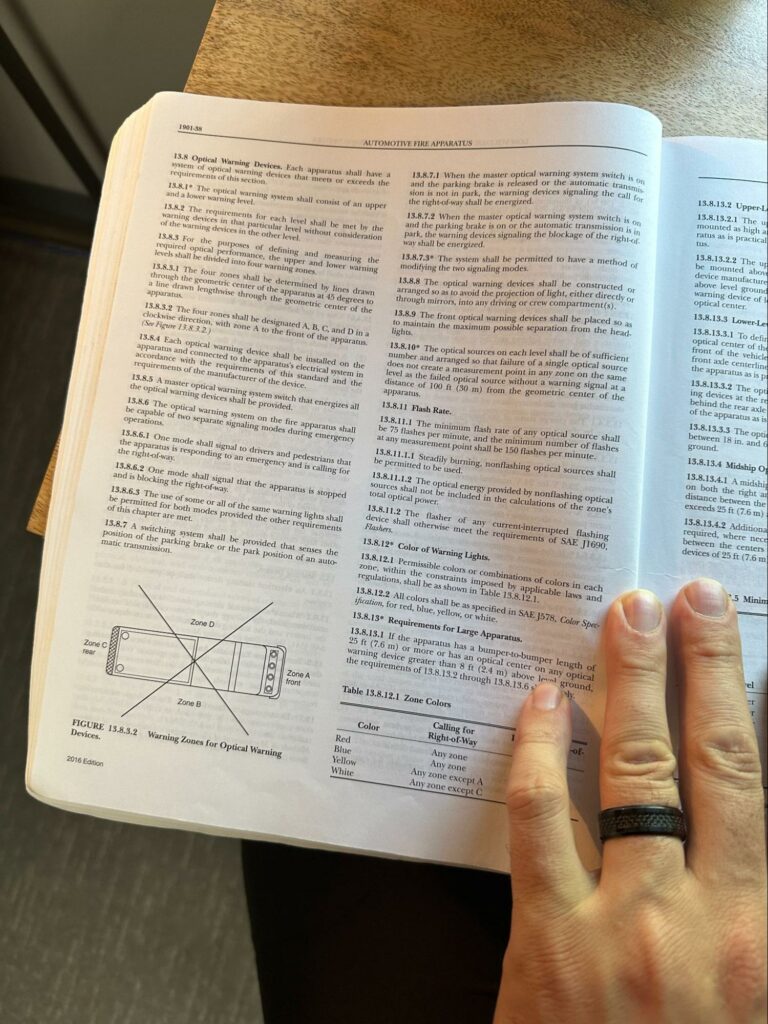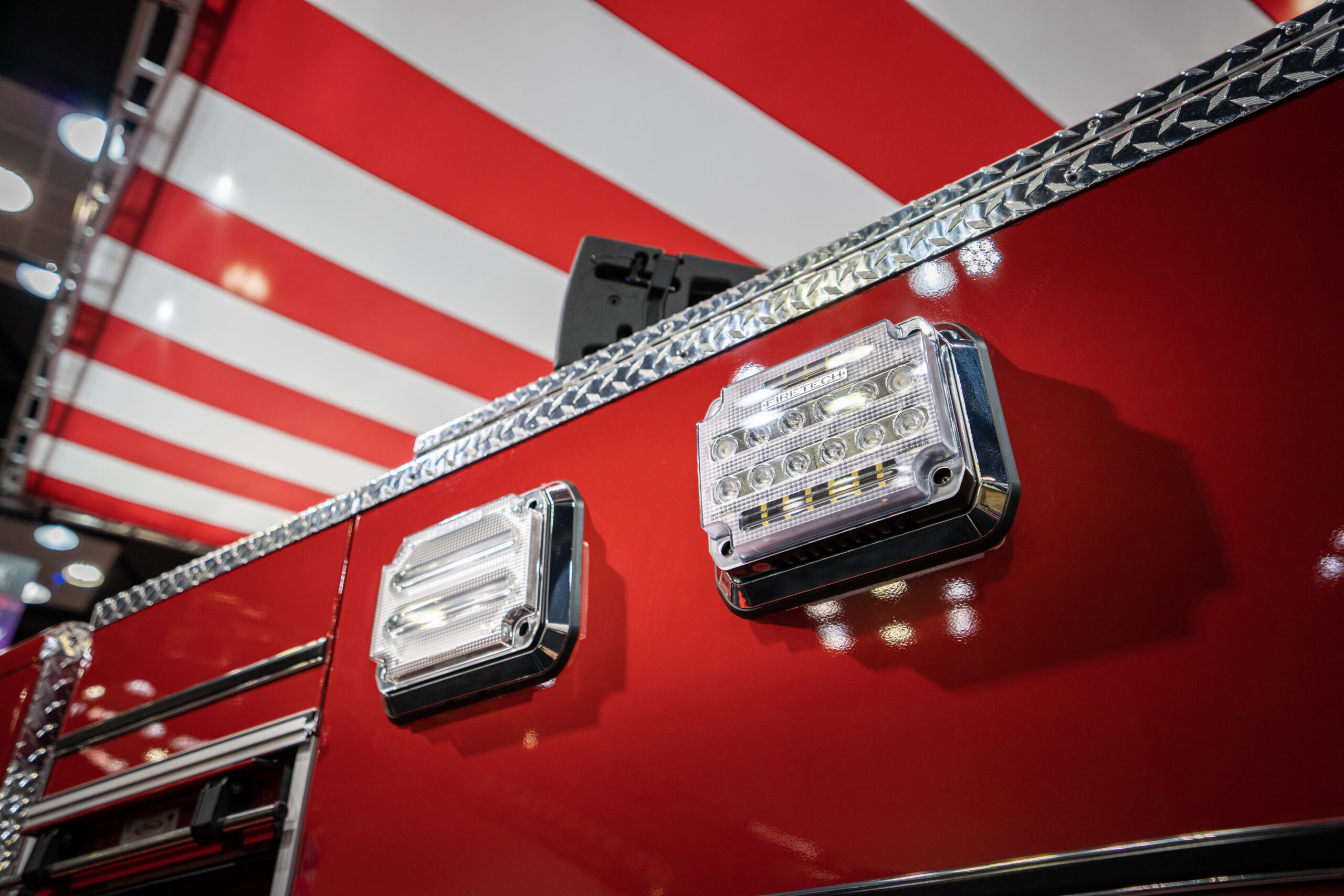When it comes to firefighter’s safety, we owe a lot to the National Fire Protection Association. Established in 1986, this organization, also known as the NFPA, is a global self-funded nonprofit organization devoted to eliminating death, injury, property and economic loss due to fire, electrical, and other related hazards.
The NFPA has developed over 300 codes and standards to further their mission “To help save lives and reduce loss with information, knowledge and passion.” These codes establish criteria for building, processing, designing, servicing, and installing around the world with over 250 technical committees dedicated to this process.
As all those involved in the fire service industry know, particularly those in the fire apparatus industry,the NFPA 1900 standards guide and largely dictate how fire apparatuses are built. And while it’s written with the best of intentions, sometimes the interpretation of said standards isn’t plainly black and white. Fortunately, HiViz Lighting Inc.’s CEO, Sam Massa, has dedicated much of his career to becoming actively involved with the NFPA, serving on the NFPA 1900 technical committee and chaired the electrical task group relating to lighting during the most recent revision process. While he can’t speak on behalf of the committee, he’s an excellent resource when questions arise from our customers.
Recently, we received an Instagram message with a frequently asked question that we wanted to address:
Does the NFPA require all warning lights to be from the same manufacturer?

The short answer is no, and we will go into more technical detail on this below. It’s worth noting here that if you’re being told otherwise by a manufacturer, it’s likely a sales tactic to ensure that you buy product solely from them.
If you’re interested in the very in-depth technical explanation, here’s the word for word email response from Sam to the customer:
Hi there!
It’s nice to meet you here over email. Chelsea sent me a note and asked if I could help clarify some of the NFPA compliance questions you had for warning light fixtures. This is a technical and long-winded reply, so please pardon my lack of brevity.
There is a misconception that all warning lights have to be “by one manufacturer” that gets brought up from time to time around the industry. Much of this stems from one very large warning light manufacturer who has aggressively lobbied for this type of regulation, although that language does not formally exist today in any standard’s language. Despite that being the case, some fire apparatus manufacturers erroneously assume that it is true, and we (and others) fight this battle often enough it was finally addressed and put to bed in the 2024 NFPA 1900 standard. See 2024 NFPA 1900 section 10.7.4.4 and A.10.7.4.4, and 2016 NFPA 1901 13.8.


While I do serve on the NFPA 1900 technical committee (and legacy 1901 technical committee), and did chair the electrical task group related to lighting during this most recent revision process, as a disclaimer I do have to be very careful not to speak on behalf of the committee or give an official committee opinion in my reply. The below are my observations and experiences alone, and should not be misconstrued as an official message on behalf of the technical committee. There is a process for getting a “formal interpretation” if there is a need, although in this case the answer to your question is very clearly spelled out in the annex of the 2024 standard (attached here).

For future reference, if you ever need a formal interpretation, here’s some more info: https://www.nfpa.org/Codes-and-Standards/Standards-Development/How-the-process-works/TIAs-Errata-and-FIs
For some background, during the recent NFPA 1900 committee discussion there was a public input and subsequent public comment made that suggested language be added to the standard that specifically stated that warning lights from multiple device manufacturers were permitted on an apparatus.
There was discussion amongst various light and apparatus manufacturers who attended the task group meetings (not the more balanced full-committee meetings), and the majority of light manufacturers on the task group discussed that they were in favor of adding the disambiguation language as proposed. I did not hear a technical or safety argument to be made for requiring all lights be from one manufacturer, and I also did not hear an argument made for allowing or disallowing multi-manufacturer systems.
At the committee level, which consists of a balanced grouping of vetted categories (regulators, firefighters, manufacturers, etc), the discussion was related to “why do we need this language?” as opposed to the merits of the statement itself. They discussed that the document was not intended to list all the possible configurations of fire apparatus that are allowed, but was designed to create a minimum requirement. If it does not explicitly state “this is not allowed”, generally the proverbial wisdom is that whatever the thing is, “is” permissible as long as it is in compliance with the language.
On the subject of “are warning lights from more than one manufacturer allowed”, the 2016 language lays out a specific set of requirements for a compliant warning light system. There are optical requirements, electrical requirements, and mechanical requirements. And they are all “minimum” standards, not maximums. The language does not state anything at all about “only one manufacturer being permissible”, and it does not say that the device manufacturer of one light has to agree to another light being in its compliance calculation. It just says the system has to be compliant.

I recall the technical committee discussion going back and forth with the general consensus being that “no, we don’t need to add language because it does not explicitly state that it is disallowed”. After further discussion and during the public comment reconvening of the task group (all but one lighting manufacturer) agreed that this misnomer was so prevalent around the industry, that the comment was meritorious and proposed adding a comment in the annex with further explanation.
While the committee generally did not have the same passion about the topic as many of the task group members did, they did come up with some language and added it to the annex as shown in the attached photos, and which explicitly states that devices can be manufactured by more than one company and still be compliant. This language was voted on and passed unanimously by the technical committee members, and was subsequently published in the 2024 standard. Please see attached.

For one more point of clarity, in your specific application, it is important to remember that the standard spells out a minimum but not a maximum. In your use case, what that means is that if your apparatus has a light system on it which is compliant (which, by the way, is possible with a very small/minimum lighting system using modern tech), you can add virtually anything you want in addition without having to re-compliance your system. The reason I mention this is that one lighting manufacturer in the space is well-known for saying “well even if it’s not a regulation, if you choose any other manufacturer’s lights, we won’t provide a compliance statement for our lighting system because we don’t know what impact that other light fixture has on our photometry.” If a lighting system is compliant with a certain subset of fixtures, it is simply not accurate that adding additional fixtures by another manufacturer could cause the originally-compliant system to fall out of compliance. Some sample illustrative math is below:
Let’s imagine the photometry requirement for a compliant system in “Lower Zone A” is 300 CDs/Min.
Zone Lower A.
Brand 1:
Light 1= 100 CDs/min
Light 2= 100 CDs/min
Light 3= 100 CDs/min
Light 4= 100 CDs/min
Total: 400 CDs/min
Brand 2:
Light 1= ____ CDs/min
Light 2= ____ CDs/min
Light 3= ____ CDs/min
Light 4= ____ CDs/min
If you have 4 fixtures which each make 100cds/min, you would exceed the total by 100 cds/min before you even added lights from another manufacturer. There isn’t such a thing as a negative value, and therefore the fixtures from brand 2 have no impact on the photometry of brand 1.
Another thing you can do is:
Brand 1:
Light 1= 100 CDs/min
Light 2= 100 CDs/min
Brand 2:
Light 3= 100 CDs/min
Light 4= 100 CDs/min
Total: 400 CDs/min
If you have 4 fixtures which each make 100cds/min but manufactured by two different companies, you still exceed the requirements by 100 cds/min and the system would be considered “compliant”. The brand or lighthead manufacturer has no bearing on the outcome.
I hope this is helpful and please feel free to reach out if you would like to schedule a call or zoom to run over this stuff! It’s a technical and complicated topic, but there is no reason the technical complexity needs to get in your way of building the right apparatus to protect the citizens of your district, all while being fully NFPA 1900 compliant.
Stay safe out there,
Sam Massa

